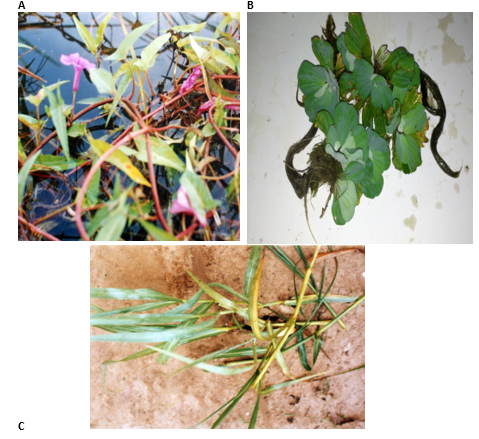Antibiosis and GC-MS of secondary metabolites of rhizosphere bacteria from Manatee foodplants in the humic freshwater ecosystem of Eniong river, Nigeria
Abstract
Microorganisms are able to synthesize secondary metabolites of various structures and bioactivities. These metabolites are produced to help the organism compete successfully with other organisms in their natural habitat and adapt with changing environmental milieu. The ability of rhizosphere bacteria (Bacillus subtilis NC_000964.3 and Pseu-domonas aeruginosa NC_002516.2) isolated from the rhizospheric soil of Manatee food plants Mimosa pygra, Ipomeoa aquatica and Pistia stratoites to inhibit the growth of human pathogens (P. aeruginosa, E. coli, S. aureus and B. subtilis) was evaluated using standard methods. It was observed that the growth extracts of B. subtilis strains M5, M8 and P7 and P. aeruginosa strains I3 and M9 contained useful bioactive compound. GC-MS analysis of the cell -free methanol extract of the antibiotic producing bacterial strains was also evaluated and the results showed that their inhibitory potentials against bacterial pathogens are due to the presence of phenylethyl alcohol, 2-ethyl-4-methyl-1,3-dioxolane, bicyclo [4.2.0] octa-1,3,5-triene and 4-amino-2-methyl-5,6-dimethyl pyrimidine for B. subtilis and 3,4-dimethyl tetrahydrofuran, 4,6-dimethyl-4-hydroxy-5- heptenoic acid and 2,4-dimethyl-4-heptanol for Pseudomonas aeruginosa. These strains of rhizosphere bacteria may be exploited to produce new antibiotics.

Published
How to Cite
Issue
Section
Copyright (c) 2024 O. Fatunla, J. P. Essien, B. N. Ita, N. U. Asamudo, J. Ekong, O. U. M. John, N. A. Abraham

This work is licensed under a Creative Commons Attribution 4.0 International License.







